We came across this amazing alopecia areata success story from a woman with an user-name, Ypsimama, on Alopecia World.
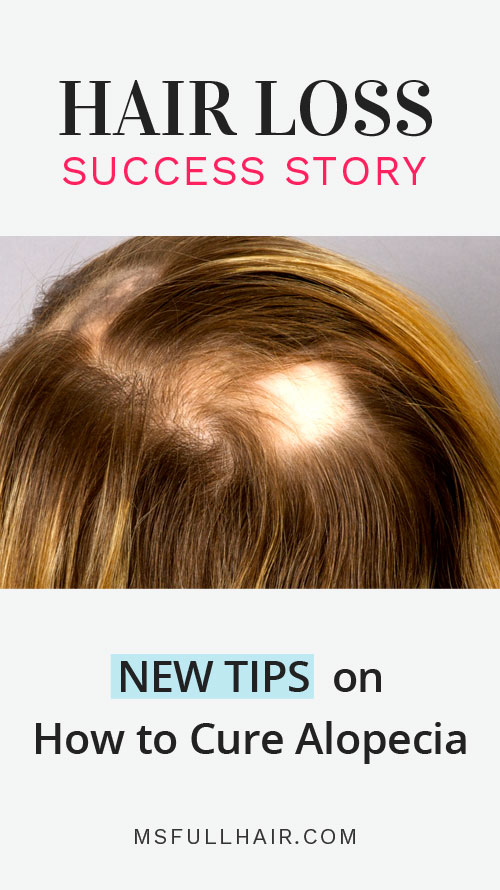
As many of you already know, alopecia areata is a type of hair loss with patchy bald spot(s) appearing on the scalp. While some people with alopecia areata (AA) witness their hair naturally regrow on bald spots after a period of time (often within several months to a year), not everyone has a positive outcome. In many cases, the patchy hair loss becomes permanent or progresses into alopecia totalis and universalis (ie. total hair loss) in worse-case scenarios.
What we LOVE about this success story is that she was healing alopecia areata naturally and provides many great tips we can easily implement on daily lives. Her story is so inspiring and will get you excited to try out her methods (skip to action plans).
She wrote about 15 posts total in the forum and we read each of them very carefully to give you the most accurate information and suggest a definite action plan to follow to cure your hair loss. Here is her story of how healing alopecia areata naturally occurred (Also check out other AA success story we recently featured)
Her background story
Her hair loss started about 10 years ago when she was pregnant. She noticed her first bald spot appearing around that time, which then increased to several spots. She also noted that she has a family history of alopecia areata, specifically including her great-grandmother and mother.
Hair loss treatments and remedies she tried
She clearly states that she tried almost everything from internal and topical steroids to popular alopecia areata home remedies including onion juice. Please note that she didn’t chronologically talked about her trial-and-error hair loss remedies, so we did our best to gather the information based on compiling all of her threads:
1. Steroids
One of her initial attempts to cure her alopecia areata was a visit to a dermatologist, who prescribed her with a steroid cream followed by steroid shots. She claims that she tried all types of steroid treatments including steroid shots, topical creams and internal medications. Unfortunately, none of them were “particularly successful”.
● Result? Not so successful
2. Typical tests for hair loss
She also went for all of the tests you typically expect for an office visit, in addition to others that could trigger her hair loss including thyroid, hormones, blood levels, as well as auto immune marker. All of these results came back in the normal range.
● Result? Came back normal, meaning these weren’t what was triggering her hair loss
3. A certain type of food elimination
Being really desperate, she also went through numerous research studies for days (or months) to find out what could be the main cause could be for her alopecia areata. She came across some intriguing information on how certain foods can trigger inflammatory reactions and affect hormones negatively in our body.
In order to minimize such undesirable reactions, she started eliminating certain foods from her diet that are known for triggering not-so- desirable reactions in many people and hoped this would help regrow her lost hair. The foods she eliminated to cure alopecia areata includes the following:
- Caffeine
- Dairy
- Sugar
- Wheat
- Rice
- Potatoes
Once she completely eliminated the above foods, she saw amazing result by having a “FULL recovery of hair” within 6 months.
● Result? Successful “FULL” hair growth within 6 month
4. Slipping back to old eating habit
This fully-grown hair thanks to the food elimination diet (#3) lasted about 1 year, until she slipped back to the old habit – eating whatever foods she wanted to eat, which includes what’s listed above. Sooner or later, she started seeing small bald spots appearing again.
Even worse, when she was pregnant with her second child, more bald spots popped up and she was losing a lot more hair compared to her first pregnancy. She says she even lost the part of her eyelashes this time, which then grew back and shed again within a couple of years. She also adds that in the worst times, there were more than 20 bald spots all at the same time in various sizes from “a dime to larger than a golf ball.”
She notes that when many bald spots popped up, this was also the time when she was “living on coffee” in addition to eating in old-habitual ways (meaning no more following the food elimination diet listed above).
● Result? Alopecia areata appearing again, but worse this time
5. The nutritional test
In order to get to the bottom of her hair loss, she also performed nutritional assessment tests called NutrEval by Genova Diagnostics. What this test basically does is to reveal nutritional imbalances by measuring vitamin markers, amino acid, hormone, mineral, metabolic fatty acids and many other levels.
The test result was helpful in her case, as it revealed that she was deficient in D3, Biotin, some of the B vitamins. In order to get back to the normal range, she started taking a large amount of those supplements.
● Result? The test result was helpful by showing she was deficient in D3, Biotin and other B vitamins, which all are closely related to hair loss
OUR NOTE: We looked up the company, Genova Diagnostics, about their product offerings as well as how much it costs. First, the company has been around over 30 years doing Diagnostic lab testing for health. The only negative thing is that in order to get such a test done, it will cost you over $1000 which is way too expensive.
The good news is that based on what we read, these tests are covered by certain health insurance, which can come down to around $150 out of your pocket. So if you are interested in this type of test, talk to your insurance first. Also note that there are other companies offering similar types of nutritional tests.
5. Food allergy test
She also went to see a doctor for food allergy test, which is a popular test for people with alopecia. Food allergies and alopecia are closely related, since it can cause undesirable auto-immune reactions. People with alopecia areata who are tested with food allergies often report several or more of allergic reactions, especially dairy, wheat, eggs and soy.
In her case the results came back normal. She says they couldn’t find a “single allergy”
● Result? Normal, meaning she didn’t have any allergy
6. Food sensitivity test
She also did a food sensitivity test on another doctor visit. For this testing, her doctor takes a bunch of vials of blood, which then get tested against numerous foods.
In her case, her test was done by Alletess Medical Laboratory, the company specialized in testing both food allergy and sensitivity (their website is www.foodallergy.com). She notes that her insurance covered the most of it, except for $140 which was the amount for out-of-pocket expense.
From the test result, which came in a booklet form in about a month later, she found a list of foods that her body was reactive to. This includes coffee, watermelon, bell peppers, cottage cheese, wheat, gluten, baker’s yeast, mushroom, tomatoes, cane sugar, lemon, soy and many more.
While it was very difficult for her (or anybody) to stop eating those foods, she immediately started eliminating them and persisted for 3-4 months. The result? This was THE game changer.
● Result? After 3-4 months of her elimination diet (from the sensitive food list result), she started noticing her hair growing back again.
Summary – What cured her alopecia areata
In sum, adding a number of supplements as well as dietary changes by eliminating certain foods helped her cure alopecia areata and grow her hair back.
As you can see, she actually did numerous testing and had many trials-and-errors to find her ultimate hair loss cure.
The BEST part of this success story is that after 3 months of strictly adhering to her sensitive-food elimination diet, she noticed a BIG difference on her hair and claims that she now has “a FULL head of hair” as well as her eyebrows mostly being intact.
Now, it’s time for a simple action plan for anyone who is suffering from alopecia areata.
Action plan – What you can do to regrow your hair like her
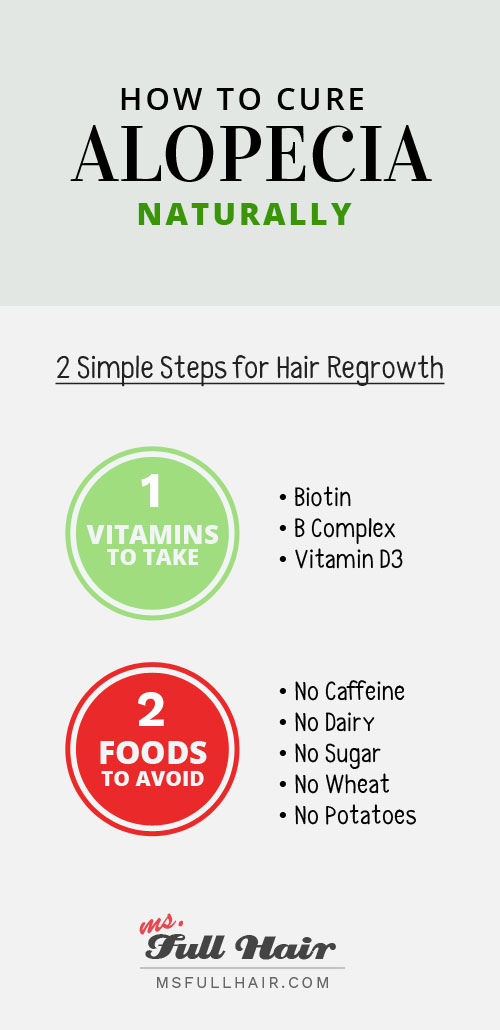
Assuming your hair loss is not from well-known causes of hair loss such as the thyroid disorder, this is our suggested action plan based on what she did to reverse her alopecia areata (NOTE: Always talk to your doctor first before trying something new to treat your hair loss.)
#1 Keep up with Biotin, Vitamin B, and D3
There are many research studies on how all of these 3 vitamins are crucial for hair growth (You can also read What Dr Oz recommends). In her case, she found out her vitamin levels were low on ALL 3, thus started taking supplements to get back to the normal levels.
What supplements to take:
In one of the posts, she shared her supplements (some with specific brands):
- Sublingual B complex
- Biotin, specifically Solaray Biotin lozenges
- Liquid vitamin D3 drops in olive oil (Liquid form)
- Emergen-C lite with MSM
- Hemp oil for the natural balance of omegas
NOTE: “Sublingual” vitamins are known for a better absorption rate. She also says that she didn’t take all of them daily, but rather “stagger them throughout the week.”
#2 Eliminate these foods
If you remember, before her food sensitivity test, she actually had a great success with hair regrowth by simply eliminating these foods in one of her early attempts:
Foods to avoid if you have AA:
- Caffeine
- Dairy
- Sugar
- Wheat
- Rice
- Potatoes
A beginner to an alopecia areata elimination diet?
Simple answer: Avoid the above foods (caffeine, dairy, sugar, wheat, rice, and potatoes) from your diet.
If this is your first time trying the food elimination diet method for your alopecia, start with the above list by removing them from your daily diet (She had a great success). This is a great start and an easier version of anti-inflammatory diet for alopecia areata. Give at least 3 months to see hair growth results. In her case, she witness FULL hair recovery within 6 months.
Also, note that dairy is one of the most common allergies among people who have alopecia areata. So if your test shows positive, it’s the number one thing to remove from your diet for preventing hair loss in order to remove anti-inflammatory reactions in the body.
You may ask, “what foods can I eat with having alopecia areata?” or “Is there any special diet for alopecia areata?”
If this is your first time watching your diet for hair loss, once again, we strongly suggest you to start with eliminating the above foods (dairy, caffeine, wheat, sugar, potatoes, and rice). Once you become more comfortable, you can try introducing the Autoimmune Protocol (AIP) diet, which is a restrictive diet designed for healing your gut.
Want to do exactly what she did?
Try food allergy / sensitivity blood test through your doctor. She emphasizes several times that the food sensitivity blood test was a HUGE help of hair-friendly diet by identifying a number of foods that she never have thought was relevant to her hair loss (Her test result was from Alletess Medical Laboratory. (Read the part above – #6 Food sensitivity test for details).
#3 Exercise (optional)
Lastly in one of her posts, she mentions that exercise has been an important addition to her daily routine, which she believes a big help with her possible stress-related hair loss
Final takeaway
Healing alopecia areata naturally is possible!
Well, let’s start with HER final words: “We are what we eat. I do believe it is that simple.”
While her hair growth success formula may not work for everyone who is suffering from alopecia areata, she shares what actually worked for her full hair recovery and it’s a safe method for anyone to try.
After 4 months of sticking to the elimination of sensitive foods (along with supplements she was deficient in), her alopecia was gone. Yes, it’s difficult not eating a large number of foods you are so used to. But is it worth it? We definitely think so.
As an additional note, we also read some people having great hair regrowth results from different types of alopecia by implementing either gluten-free and/or an anti-inflammatory diet. We will cover them in details in our next hair loss success story.
If you have already tried this method, please share in the comments. Your story could help thousands of people suffering from hair loss!


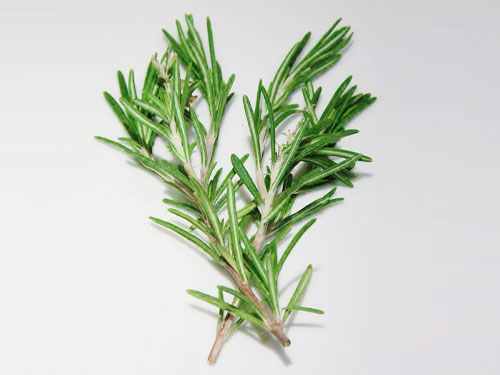
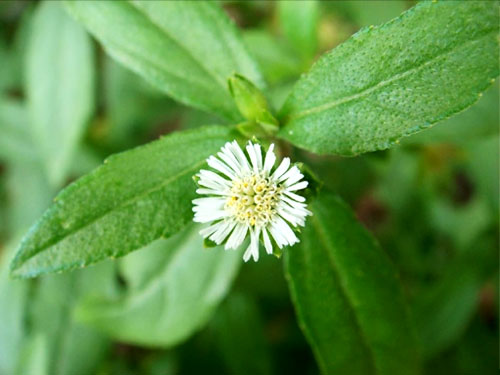
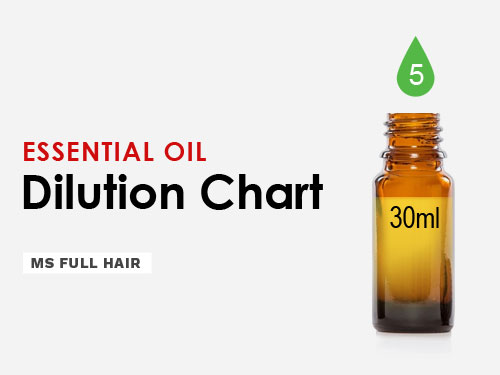
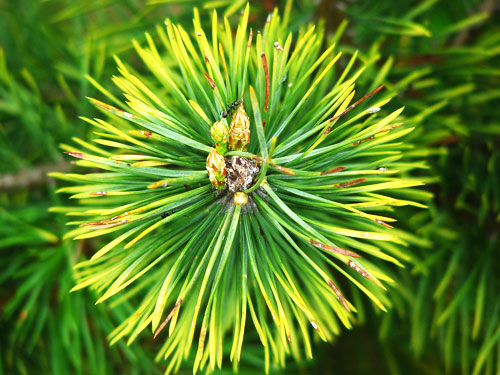

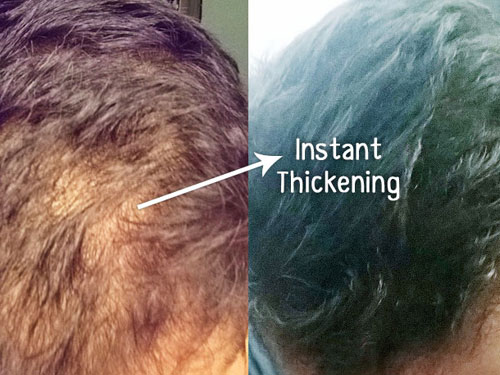

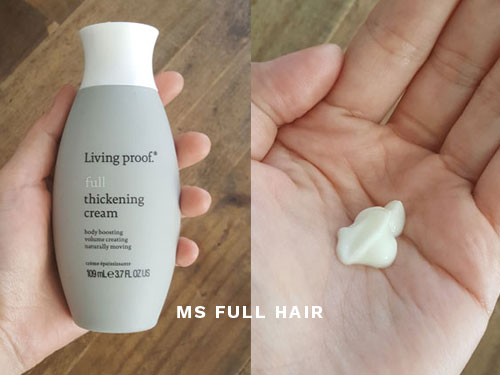
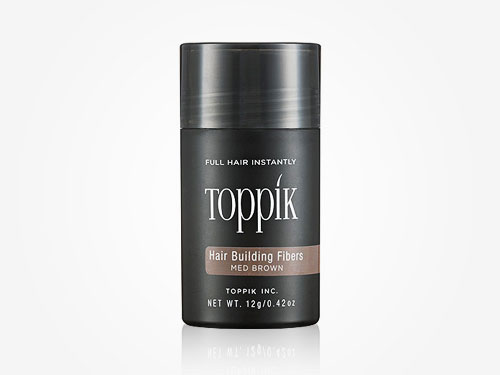
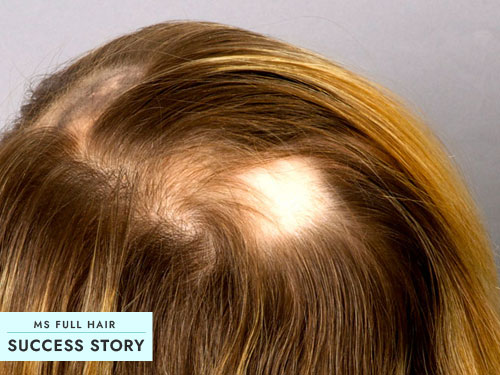
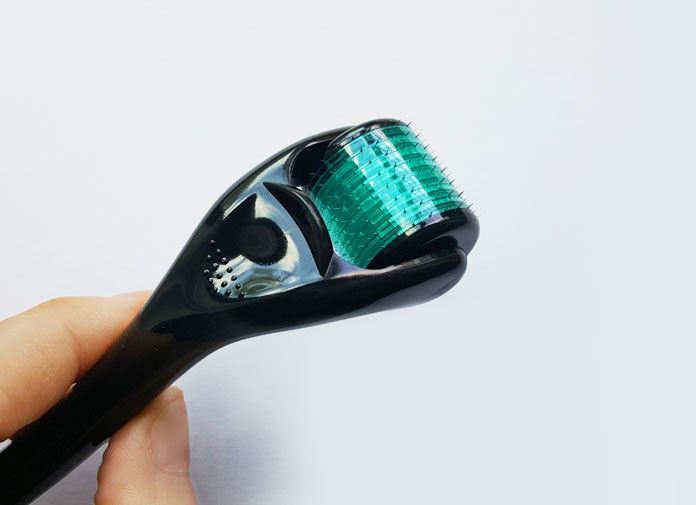
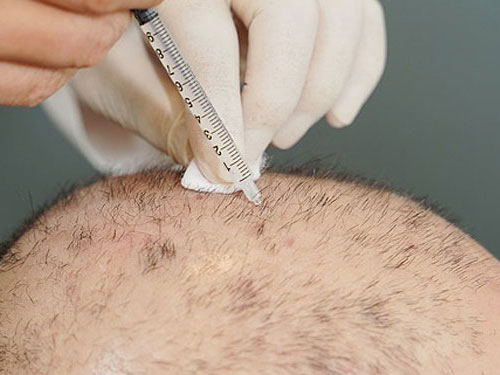

Thanks for great article! This gives me hope to keep going.
Thanks for info. I have alopecia universalis.
I did Dr Amy Meyers anti inflammatory diet for several months and my eyelashes started growing back. Only a few hairs here and there. Started eating things not a part of the diet. Now at a stand still. Thanks for the encouragement. Plan on getting back on. I should of gave it more time. Been wearing Wigs on and off for 36 years.
After hearing this woman’s testimony I want to get food sensitivity test. I truly believe God does not want us women bald.
I pray every woman who is will get all their hair back doing this diet.
Our hair is worth it.
Thank you and God bless.
Thank you so much for sharing. I really appreciate it!